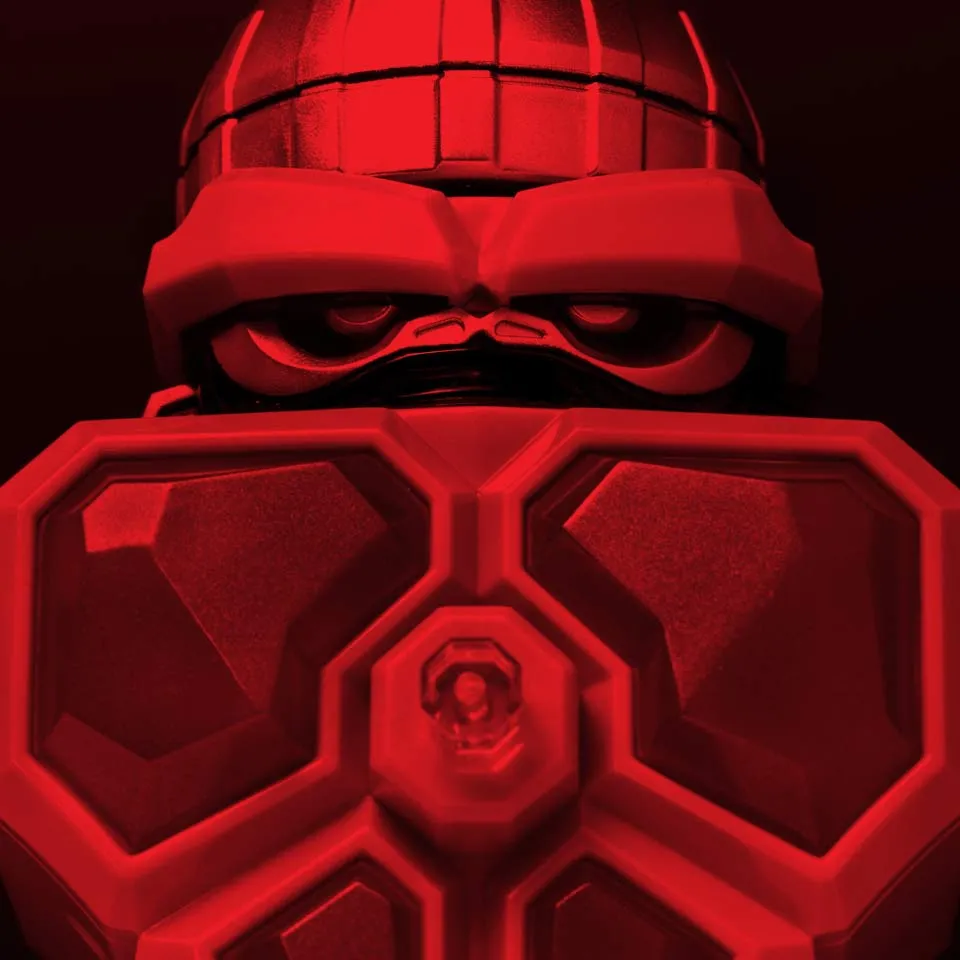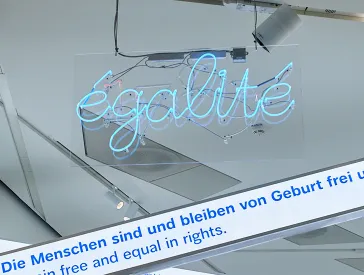Jana Sterbak’s “Golem: Objects as Sensations”
Article in the Exhibition Catalogue GOLEM
Rita Kersting
The seven elements on the ground form a long, more or less straight line that leads to a quarter circle of eight similar shapes. Almost immediately the viewer recognizes a figure, a stylized representation, that appears to have been taken from a foreign culture, a fetish, field markings , or a fertility god, excavated from some previously unknown historical layer.
The work Golem: Objects as Sensations by Canadian artist Jana Sterbak pays tribute to her hometown of Prague. More central than the complete magical figure of the golem are its fragments, its organs, which determine the composition of the installation as objects of the artistic story of creation. Stomach, spleen, heart, throat, penis, and a tongue (underneath which lay the scrap of paper with HaShem, the name of God, which in the legend brought the golem to life). In alchemy, the organs, like the metals bronze and lead, stand for different temperaments, which are associated with planets; and the constellation on the floor does in fact bring to mind a celestial constellation. The golem legend from the sixteenth century and alchemy, which also experienced a heyday in Rudolf II’s Prague, comprise key points of departure in this work. Jana Sterbak’s interest in the body as a remotely controlled entity is apparent in her work I Want You to Feel the Way I Do (1985), a dress made of wire mesh woven together with live nickel-chrome wire, or in Remote Control (1989), a metal crinoline, in which the woman wearing it moves with the help of a man operating a remote control. Clothing confining the body are represented by cages in Sterbak’s works, echoing times of the Prague Spring and the early women’s movement. In 1991 Sterbak created her best-known sculpture Vanitas: Flesh Dress for an Albino Anorectic, a dress she sewed out of 50 pieces of meat—that is, raw flank steaks—and then wore. The almost still bloody meat on bare skin mirrored the inside of the wearer in both a physical and a psychological sense. Yet again, the material refers to another reality, to vanitas and vulnerability. The cutting up and eating of raw meat forms a central element of the myths of creation throughout all times, leading us back to Golem: Objects as Sensations. This object, stressing its own objecthood, is part of a sculptural tradition extending from Alina Szapocznikow to Eva Kmentová to Maria Bartuszová. The experimental handling of the material, the hand as a molding tool, the casting of body parts and the interest in fragments and corporeality does not only refer to a masculine myth of creation, but also looks to a further development of feminist artistic approaches (not only) in Prague.
Rita Kersting has been the Landeau Family Curator for Contemporary Art at the Israel Museum in Jerusalem since 2012. She was previously director of the Kunstverein für die Rheinlande und Westfalen (Art Association for the Rhineland and Westphalia) in Düsseldorf and worked as a curator in Krefeld.
Translated by Allison Brown
Golem: Objects as Sensations Jana Sterbak, USA, 1979–1982 Mixed media, bronze, rubber, lead, silver gelatin print, ca. 560 x 560 cm The Israel Museum, Jerusalem, photo: Oded Löbl
Citation recommendation:
Rita Kersting (2016), Jana Sterbak’s “Golem: Objects as Sensations”. Article in the Exhibition Catalogue GOLEM.
URL: www.jmberlin.de/en/node/4693

Online Edition of the GOLEM Catalog: Table of Contents
The Golem in Berlin: Introduction by Peter Schäfer
Chapter 1
- The Golem Lives On: Introduction by Martina Lüdicke
- My Light is Your Life: Text by Anna Dorothea Ludewig
- Avatars: Text by Louisa Hall
- The Secret of the Cyborgs: Text by Caspar Battegay
Chapter 2
- Jewish Mysticism: Introduction by Emily D. Bilski
- Golem Magic: Text by Martina Lüdicke
- Golem, Language, Dada: Text by Emily D. Bilski
Chapter 3
- Transformation: Introduction by Emily D. Bilski
- Current page: Jana Sterbak’s Golem: Objects as Sensations: Text by Rita Kersting
- Crisálidas (Chrysalises): Text by Jorge Gil
- Rituals: Text by Christopher Lyon
- A Golem that Ended Well: Text by Emily D. Bilski
- On the Golem: Text by David Musgrave
- Louise Fishman’s Paint Golem: Text by Emily D. Bilski
Chapter 4
- Legendary Prague: Introduction by Martina Lüdicke
- Golem Variations: Text by Peter Schäfer
- Rabbi Loew’s Well-Deserved Bath: Text by Harold Gabriel Weisz Carrington
Chapter 5
- Horror and Magic: Introduction by Martina Lüdicke
- Golem and a Little Girl: Text by Helene Wecker
- The Golem with a Group of Children Dancing: Text by Karin Harrasser
- Bringing the Film Set To Life: Text by Anna-Carolin Augustin
- Golem and Mirjam: Text by Cathy S. Gelbin
Chapter 6
- Out of Control: Introduction by Emily D. Bilski
- Golem—Man Awakened with Glowing Hammer: Text by Arno Pařík
- Dangerous Symbols: Text by Charlotta Kotik
- Be Careful What You Wish For: Text by Marc Estrin
Chapter 7
- Doppelgänger: Introduction by Martina Lüdicke
- From the Golem-Talmud: Text by Joshua Cohen
- Kitaj’s Art Golem: Text by Tracy Bartley
- The Golem as Techno-Imagination?: Text by Cosima Wagner
See also
- GOLEM: 2016, online edition with selected texts of the exhibition catalog
- GOLEM: 2016, complete printed edition of the exhibition catalog, in German
- Golem. From Mysticism to Minecraft: Online Feature, 2016
- GOLEM: Exhibition, 23 Sep 2016 to 29 Jan 2017

